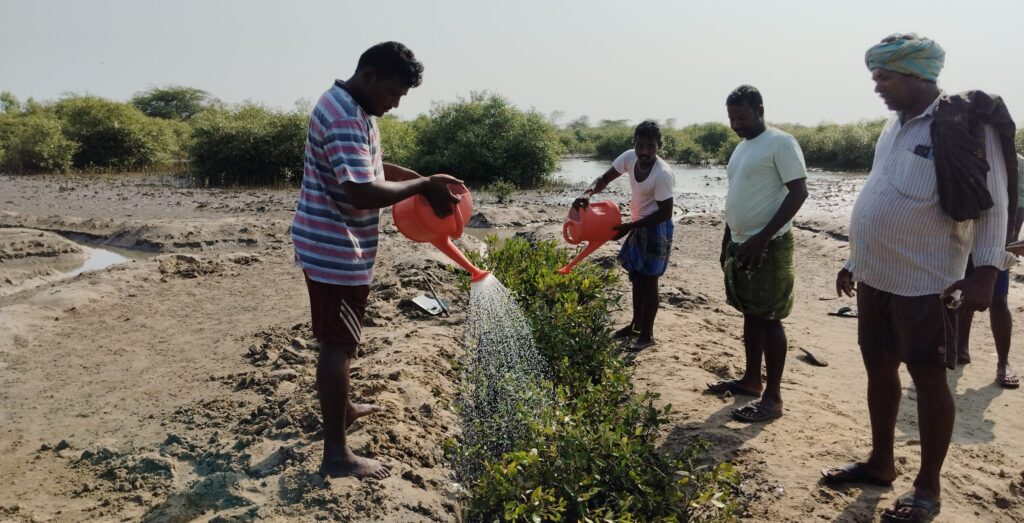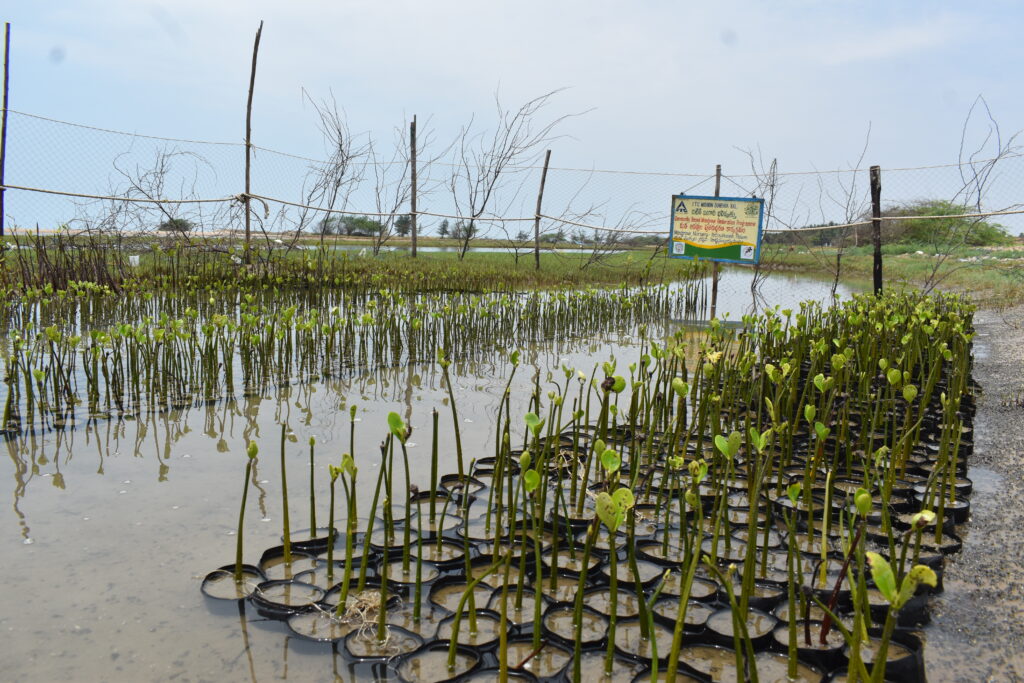
Mangrove Restoration: Nurturing Coastal Ecosystemsme
TREE Foundation recognizes the critical role mangroves play in biodiversity conservation, shoreline stabilization, and climate change mitigation. These essential functions underscore the importance of mangroves in coastal ecosystem management. Here’s how we approach the restoration of these vital habitats.
Collection and Preparation of Propagules
Mangrove seeds, known as ‘propagules’, are ready for collection when their buds start to emerge at the tip and fall to the ground, typically towards the end of the rainy season in mid-August and early September. Depending on the location, these ripened propagules are collected, stocked in bags, and promptly transported to designated nursery sites.
Upon arrival, the propagules are submerged in water overnight to prevent dehydration and ensure their viability. These seeds are then planted in nurseries, where they are nurtured until they are ready for transplantation to designated areas in the peripheral parts of estuaries earmarked for mangrove restoration.
Importance of Fencing
Fencing the nursery is crucial for several reasons. It protects the delicate propagules from disturbances by humans and animals, including physical contact, encroachment, trampling, and grazing, thereby ensuring their survival and growth. Additionally, fencing acts as a barrier against litter and pollutants, maintaining the water quality essential for the health of the saplings.
Ideal Planting Sites
The ideal site for planting mangroves is one subject to daily tidal influence, with clay topsoil or clay in the upper subsoils. Transplanted saplings will not survive outside the daily tidal influence. The saplings need to be submerged in water daily (at least once during high tide) to prevent the decomposition of the propagules. If a restoration site lacks proper water flow, channeling the area will increase water flow and enhance the growth of mangrove saplings. The “fishbone” restoration method is particularly effective in elevated degraded areas for ensuring proper water supply and mangrove growth.

Monitoring and Maintenance
Regular monitoring is essential for assessing growth rates, health status, and environmental conditions within the nursery. This provides valuable insights into the effectiveness of germination and the overall well-being of the saplings. Similarly, monitoring plantation sites post-transplantation ensures the well-being and growth of the transplanted saplings. Clearing sedimentation due to silting is crucial to prevent the smothering of mangrove roots, which can slow their growth. By removing excess silt, proper water flow is maintained, ensuring optimal conditions for mangrove development. Additionally, replacing damaged seeds from time to time ensures a healthy and diverse nursery stock, maximizing the success of sapling development and restoration efforts in mangrove restoration projects.
Conclusion
Through meticulous planning and dedicated efforts, TREE Foundation is committed to restoring and preserving mangrove ecosystems. Our work ensures the survival and growth of these vital plants, contributing to the health and stability of our coastal environments. Join us in our mission to protect and restore mangroves, safeguarding our planet for future generations.
Restore Mangroves, Protect Our Coasts!
Support TREE Foundation’s efforts to restore mangrove ecosystems along Andhra Pradesh’s coastlines. Mangroves are vital for biodiversity, shoreline stabilization, and climate change mitigation. Your donation will aid in planting and nurturing mangrove saplings, ensuring the health and stability of these critical habitats. Join us in preserving our coastal ecosystems for future generations. Donate Now!

